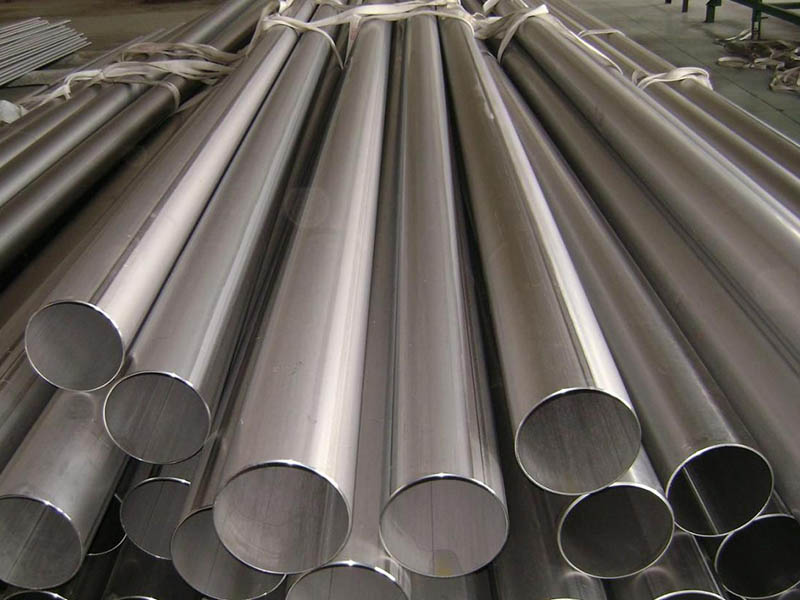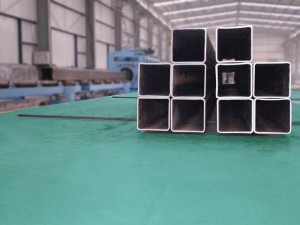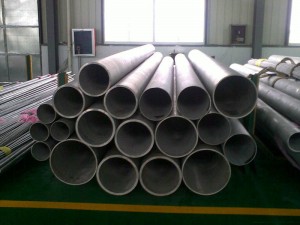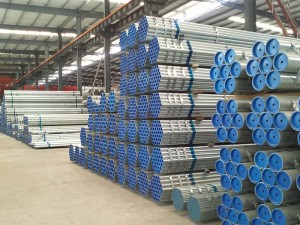Quality and quantity of stainless steel welded pipe
Stainless steel welded pipe, referred to as welded pipe for short, is a steel pipe made of commonly used steel or steel strip after crimping and forming by the unit and die. Welded steel pipe has the advantages of simple production process, high production efficiency, many varieties and specifications and less equipment investment, but its general strength is lower than that of seamless steel pipe.
Since the 1930s, with the rapid development of high-quality strip continuous rolling production and the progress of welding and inspection technology, the weld quality has been continuously improved, the varieties and specifications of welded steel pipes have been increasing, and seamless steel pipes have been replaced in more and more fields, especially in heat exchange equipment pipes, decorative pipes, medium and low pressure fluid pipes, etc.

Small diameter stainless steel welded pipe is produced continuously on-line. The thicker the wall thickness, the greater the investment of unit and fusion equipment, and the less economical and practical it is. The thinner the wall thickness is, the lower the input-output ratio will be; Secondly, the process of the product determines its advantages and disadvantages. Generally, the welded steel pipe has high precision, uniform wall thickness, high surface brightness inside and outside the pipe (the surface brightness of the steel pipe determined by the surface grade of the steel plate), and can be arbitrarily sized. Therefore, it embodies its economy and aesthetics in the application of high-precision, medium and low pressure fluids.
316L stainless steel welded pipe is a basic pipe, so it also has many necessary indicators of hardness, including many aspects. The following is about the hardness indicators of 16L stainless steel welded pipe. According to different test methods and application scope, hardness can be divided into Brinell hardness, Rockwell hardness, Vickers hardness, shore hardness, microhardness and high temperature hardness. Brinell, Rockwell and Vickers hardness are commonly used for pipes.
1. Brinell hardness (HB) press a steel ball or cemented carbide ball with a certain diameter into the sample surface with the specified test force (f), remove the test force after the specified holding time, measure the indentation diameter (L) on the sample surface, and the Brinell hardness value is the quotient obtained by dividing the test force by the indentation spherical surface area. Expressed in HBS (steel ball), the unit is n / mm2 (MPA), and the calculation formula is as follows: F - test force pressed into the surface of 316L stainless steel welded pipe sample, N, D - diameter of steel ball for test, MMD - uniform diameter of indentation, mm. The determination of Brinell hardness is more accurate and reliable, but generally HBS is only suitable for metal materials below 450N / mm2 (MPA), not for harder steel or thinner 316L stainless steel welded pipe. In 316L stainless steel welded pipe, Brinell hardness is the most widely used. Indentation diameter D is often used to express the hardness of the material, which is intuitive and convenient.
For example, 120hbs10 / 1000130 indicates that the Brinell hardness value measured by using a 10mm diameter steel ball under the action of 1000kgf (9.807kn) test force for 30s is 120N / mm2 (MPA).
2. Rockwell hardness (HK) Rockwell hardness test, like Brinell hardness test, is an indentation test method. The difference is that it measures the indentation depth, that is, under the sequential action of initial Yong test force (FO) and total test force (f), press the indenter (steel mill cone or steel ball) into the sample surface, remove the main test force after defining the holding time, and calculate the hardness value with the measured residual indentation depth increment (E). Its value is an unknown number, represented by the symbol hr. The scales used include 9 scales such as a, B, C, D, e, F, G, h and K. The scales commonly used for hardness test of 316L stainless steel welded pipe are generally a, B and C, i.e. HRA, HRB and HRC. The hardness value is calculated by the following formula: when scale a and C are used for test, HR = 100-e. when scale B is used for test, HR = 130-e. in the formula, e -- residual indentation depth increment, which is shown in the delimited unit of 0.002mm, that is, when the axial displacement of the indenter is one unit (0.002mm), it is equivalent to a number of Rockwell hardness changes.








